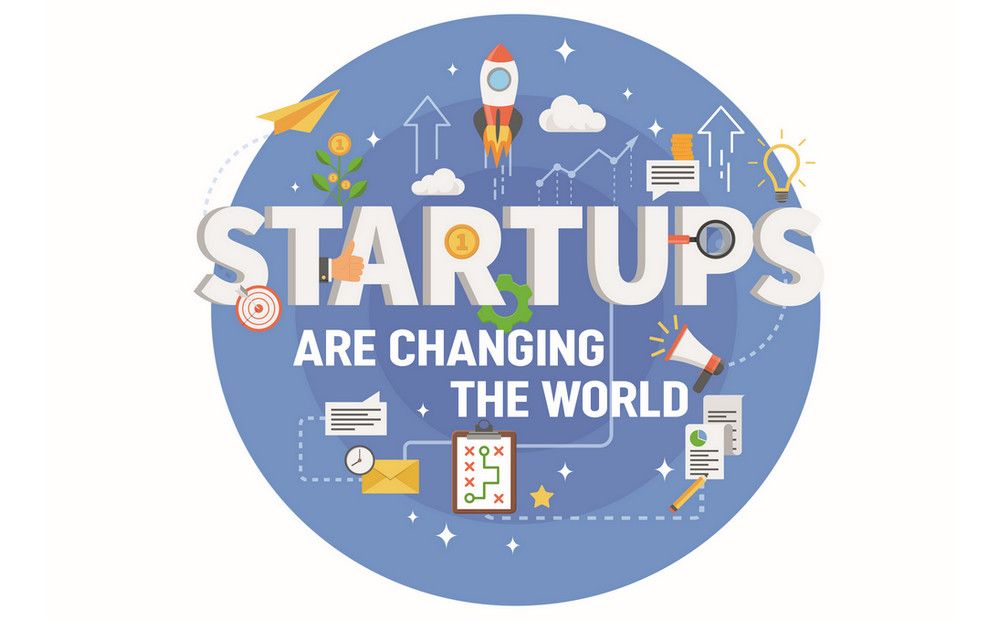In the early stages, startup companies have little or no revenue coming in. They have an idea that they have to develop, test, and market. We suggest to look at few startups started by motivated individuals.
1. FACEBOOK
Started off as a social media platform aiming to connect Harvard students through an online community, Facebook is now one of the most powerful social networks in the world boasting approximately 2.7 billion monthly users. Online directories that featured pictures of students alongside some information about them already existed at American colleges and universities at the time. These were popularly known as “face books”. Mark Zuckerberg decided to come up with making one exclusively for Harvard students. Finally, “The Facebook” came into being thanks to Zuckerberg and co-founders Eduardo Saverin, Andrew McCollum, Dustin Moskovitz, and Chris Hughes. The exclusivity factor worked well while the network adapted a more mature layout over the years, and the rest is history.
2. APPLE
Apple is arguably one of the most valuable tech companies globally with a market value of over $2 trillion. In 1976, college dropouts pledged to change the way people viewed computers by making computers small and easy-to-use. It’s often hard to believe that the first Apple computer was built in a small garage in Cupertino, California, United States. The idea of a user-friendly computer revolutionised Apple. The company also introduced the first-ever colour graphics.
3. AMAZON
Just like Apple, Amazon is another company that was way ahead of its time. At a time where people could easily visit the nearest bookstore to buy books, a website that sells them online wasn’t much big of a deal. However, the results were shocking. Turns out a lot of people wanted a virtual bookstore. In just a month of its launch, Amazon sold books all over the United States and in other 45 countries. Slowly and gradually, Jeff Bezos worked towards his vision of making his company dominate eCommerce by selling almost everything – and look where it stands today!
4. AIRBNB
In 2007, designers Brian Chesky and Joe Gebbia couldn’t afford the rent on their San Francisco apartment. There was a design conference coming to San Francisco and the city’s hotels were fully booked, so they came up with the idea of renting out three airbeds on their living-room floor and cooking their guests breakfast. They set up a simple blog and got three renters (two guys, one girl) for $80 each. After the first weekend, they started receiving emails from around the world asking when the website would be available in places like Buenos Aires, London, and Japan. After a small success and product market fit, they enlisted a former flatmate and a computer science graduate, Nathan Blecharczyk, to develop the website and join the venture. Today the company promotes people-to-people connections in 220+ countries.
5. INSTAGRAM
This is a story of two guys who made an app in just eight weeks. Kevin Systrom, a Stanford graduate who worked on Google’s Gmail and corporate development, spent his weekends building an app that allowed location-aware photo and note-sharing, dubbing it Burbn. That’s how Kevin met Mike Krieger, an early Burbn user and Instagram’s co-founder. Later, Burbn was reduced to photos only and named Instagram.
6. UBER
After a conference in Paris, Travis Kalanick and Garrett Camp were complaining about the many crappy things we all have to deal with in life, including finding a cab. The next thing you know, the two were already brainstorming, thinking about ways to find cars at the right place, at the right time.
7. PINTEREST
Raised by doctor parents, Ben Silbermann attended Yale University starting in 1999 and soon realised that he didn’t want to be doctor. In 2009, Ben and a college friend, Paul Sciarra, along with Evan Sharp, started working on a website on which people could show collections of things they were interested in, in an interactive pin-board format. Ben personally wrote to the website's first 7,000 users offering his personal phone number and even meeting with some of them. Over a Thanksgiving dinner, Ben’s girlfriend thought of a name for it: Pinterest.
8. LINKEDIN
In late 2002, Reid Hoffman recruited a team of old colleagues from SocialNet and PayPal to work on a new idea. By May 2003, Reid launched LinkedIn out of his living room, inviting 350 of his contacts to join his network and create their own profiles. The business started with a slow growth at first – as few as 20 signups on some days.
9. WHATSAPP
Jan Koum and Brian Acton, two friends and colleagues from Yahoo were frustrated with the idea of having so many advertisements on any page. After a lot of ups and downs they launched WhatsApp in 2009, with a clear purpose that their service would definitely not carry any advertising and would maintain a relentless focus on delivering a gimmickless, reliable, friction-free user experience.
10. EPIC GAMES
Founded as Potomac Computer Systems in founder Tim Sweeney's parents' house, the single-person game-development company soon adopted the name Epic MegaGames (later, Epic Games) to make it seem larger than it was. Its first big project was the Unreal game engine, which still powers its hits including, of course, Fortnite, which pulls in hundreds of millions of dollars a month and has become a cultural phenomenon with more than 250 million players around the globe.
11. MAILCHIMP
Co-founder/CEO Ben Chestnut was running a design consulting business in the year 2000 and had a stream of clients who wanted email newsletters created. The only problem was that he hated designing them. So, to spare his team the tedium, he decided to build a tool that would streamline the process. Mailchimp, a $400 million run rate business, was born.
12. LYNDA
Lynda Weinman started as a teacher in need of tools to instruct web designers in the late 1990s. The offerings at bookstores were bland, so she began producing training films that better educated her students. Tutorial by tutorial her company helped software developers and designers improve their skills. She spent two decades building a content library and tech assets that had enough scale to entice LinkedIn to pay $1.5 billion to acquire the company.
13. SHUTTERSTOCK
Jon Oringer is a professional software developer and an amateur photographer. He combined this set of skills and used 30,000 photos from his personal photo library to start a stock photo service that is currently worth $2 billion. His capital efficiency paid off and ultimately turned him into a truly self-made billionaire.
14. SNAPCHAT
Evan Spiegel, Reggie Brown, and Bobby Murphy, three friends from college, were testing out their entrepreneurial skills. During a casual chat Reggie said, "I wish these photos I am sending this girl would disappear." Soon after, Evan referred to it as a "million-dollar idea". They worked on the app and launched it under the name of Picaboo; later they renamed it to Snapchat.
15. SLACK
Companies were already using email platforms to communicate with one another and manage work. Slack didn’t add anything new to the company culture. However, according to Slack creators, the main reason behind marketing the app was that 70% to 80% of companies didn’t have a designated tool for internal communication. They decided to fill in the gap by launching Slack. Now the billion-dollar company has scaled up to teams of all sizes and has offered integration with dozens of other tools.






